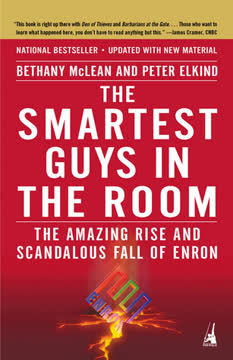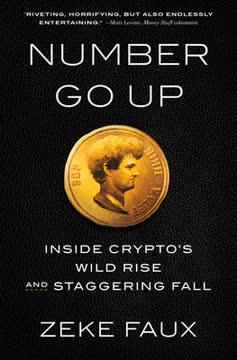Key Takeaways
1. The Internet Empowers Outsiders to Challenge Established Insiders
The Internet had allowed a lot of people who otherwise never would have been let anywhere near the inside to get close enough to make trouble.
Bypassing Gatekeepers. The Internet provided individuals, regardless of their traditional credentials or status, with tools and platforms to bypass established gatekeepers and directly challenge powerful institutions. This allowed people on the "fringe" to gain influence and disrupt industries previously controlled by "insiders."
Examples of disruption:
- Jonathan Lebed, a teenager, manipulated stock prices from his bedroom.
- Marcus Arnold, another teenager, offered legal advice online, competing with licensed lawyers.
- Musicians like Marillion connected directly with fans, bypassing record labels.
Thwarting Rules. The technology made it possible for people to ignore or circumvent old rules, social conventions, and market restrictions that had previously protected incumbents. This created a new landscape where authority was no longer guaranteed by position but had to be earned or asserted in the digital space.
2. Information Access Undermines Traditional Expertise and Authority
A general collapse in the importance of formal training was a symptom of post-Internet life; knowledge, like the clothing that went with it, was being informalized.
Democratization of Knowledge. The Internet made vast amounts of information readily accessible, eroding the value of traditional expertise based on privileged access to knowledge. Amateurs could now find and disseminate information previously held by professionals, challenging their authority.
Challenging Professionals. This informalization of knowledge meant that people without formal training could appear knowledgeable and even compete with licensed professionals.
- Jonathan Lebed's stock tips were more accurate than some Wall Street analysts'.
- Marcus Arnold's legal advice, gleaned from TV and online, was sought by adults over licensed attorneys.
Shift in Value. The value shifted from possessing knowledge to accessing, synthesizing, and applying it quickly, often in unconventional ways. This put established experts, whose status relied on controlling information, at a disadvantage.
3. Technology Flattens Hierarchies, Shifting Power from Center to Edge
Peer-to-peer computing made the Internet what it wanted to be, and what it was originally designed to be: an exchange of equals or, at any rate, an exchange among people on the same level.
Pyramids vs. Pancakes. The Internet facilitated a shift from hierarchical, pyramid-shaped structures to flatter, pancake-shaped networks. In traditional pyramids, information and authority flow top-down; in pancakes, they flow freely among peers.
Decentralized Networks. Technologies like Gnutella exemplified this by enabling peer-to-peer file sharing without central servers, eliminating the need for intermediaries. This technical shift mirrored a social one, where individuals at the "edge" of a network (like employees in a company or users online) gained more power and autonomy.
Empowering the Edge. This decentralization meant that intelligence and activity moved away from the traditional "center" (large corporations, central authorities) towards the "fringe" (individuals, small groups), making the network more resilient and dynamic.
4. The Market Absorbs and Capitalizes on Anti-Establishment Ideas
Inside every alienated hacker who thinks he stands for the “good things that ultimately don’t matter to most businesses” there is a tycoon struggling to get out.
Co-option of Rebellion. Capitalism has a remarkable ability to absorb and profit from forces that initially seem hostile to it. Ideas and technologies developed by anti-establishment figures or movements are often eventually commercialized and integrated into the mainstream market.
Fringe to Mainstream. Figures like Justin Frankel (Gnutella creator) or Gene Kan, who championed free information sharing, were eventually bought out by large corporations. Their disruptive ideas, initially aimed at undermining corporate control, became catalysts for new business models.
Capitalizing on Disruption. The market actively seeks out and funds these disruptive forces because they represent opportunities for new wealth creation. This process ensures that even seemingly revolutionary movements ultimately serve to fuel the capitalist system, making it more dynamic and stable by incorporating potential opposition.
5. The Mass Market Fragments into Niche Audiences and Individual Consumers
The theme of all this—and much of what is new in the market—is that groups are narrower and defined by interests, and that the ultimate interest is . . . Me!
End of Mass Appeal. Technologies like TiVo and ReplayTV are dismantling the traditional mass market model based on broadcasting content and ads to a large, undifferentiated audience. Consumers can now easily skip commercials and curate their own viewing experiences.
Targeted Consumption. This shift enables and incentivizes advertisers to target increasingly narrow, interest-defined groups rather than broad demographics. The value lies in reaching specific individuals or small clusters with tailored messages.
Individualized Experience. The ultimate outcome is a market where products and messages are customized to individual preferences, turning the consumer into a "boutique" of one. This caters to a growing societal emphasis on individualism and personal choice.
6. Consumer Behavior Data Becomes Immensely Valuable, Challenging Privacy
Privacy is no longer a right but a wasteful luxury.
Data as Currency. The ability of new technologies, like the black box (TiVo/Replay) and Internet polling (Knowledge Networks), to collect detailed data on individual consumer behavior has created immense economic value. This data is seen as essential for efficient marketing and product development.
Precise Profiling. Companies can now build granular profiles of consumers based on their actual actions (e.g., remote control use, online browsing) rather than just broad demographics. This allows for unprecedented precision in targeting.
Efficiency vs. Privacy. The drive for market efficiency, fueled by the desire to deliver the right product/message to the right person at the right time, creates a powerful incentive to collect and analyze personal data. This economic force challenges traditional notions of privacy, framing it as an obstacle to optimal consumption.
7. Young People Emerge as Key Disruptors, Inverting Traditional Roles
So far as he could tell, the people at the SEC didn’t really understand what he had done.
Early Adopters. Young people are often the first to adopt and intuitively understand new technologies, giving them an advantage over adults who are more invested in existing systems and identities. This creates a knowledge gap that can invert traditional authority structures.
Challenging Adults. Teenagers like Jonathan Lebed and Marcus Arnold used the Internet to operate in domains typically reserved for adults, demonstrating a fluency and fearlessness that established professionals lacked. Their actions highlighted the adults' lack of understanding of the new digital landscape.
New Authority. In places like Ennis, Ireland, children became the teachers of adults regarding the Internet, and in Cedar Grove, New Jersey, teenagers' stock tips were sought by teachers and brokers. This showed how technology could redistribute prestige and authority based on digital literacy rather than age or experience.
8. Venture Capital Increasingly Fuels Fringe Challenges to Incumbents
Prior to the Internet boom, the capitalists were chary about sinking one-tenth of that sum into a small, risky venture; now they didn’t think twice.
Funding Disruption. The Internet boom dramatically increased the flow of venture capital, and crucially, directed it towards small, risky ventures on the "fringe" that explicitly aimed to disrupt established industries and incumbents.
Seeking the Edge. Smart capitalists actively sought out and funded companies and technologies that bypassed traditional rules and distribution channels. They saw the biggest profits in challenging the status quo rather than reinforcing it.
Accelerating Change. This influx of capital into disruptive technologies accelerated the pace of change across various sectors. It provided the necessary resources for fringe players to scale their operations and pose a serious threat to large, established corporations.
9. Established Institutions Are Forced to Adapt to or Embrace Disruption
The Internet had spawned a new corporate religion to replace the one it killed. The religion said: Change is inevitable, so you might as well pretend to love it lest you be taken for a doomed species.
Forced Adaptation. Faced with disruptive technologies and empowered outsiders, established institutions often find themselves with little choice but to adapt or risk obsolescence. Fighting the inevitable is seen as a losing battle.
Investing in Challengers. Paradoxically, incumbents sometimes invest in or partner with the very companies threatening them (e.g., TV networks investing in TiVo/Replay). This is an attempt to have some influence over the direction of the disruption and avoid being completely blindsided.
Maintaining Appearances. While the underlying reality of power shifts, institutions often try to maintain the appearance of control and stability. They adopt the language of change and innovation, even if it means embracing technologies that undermine their old business models.
10. Capitalism Absorbs Seemingly Hostile Forces, Thriving on Change
The market has found a way not only to permit the people who are most threatening to it their rebellious notions but to capitalize on them.
Subsuming Opposition. Capitalism, particularly in its current phase, demonstrates a remarkable capacity to absorb and neutralize opposition by incorporating rebellious ideas and individuals into the market system. Movements that start outside the system are often eventually commercialized.
Profit from Disruption. The system thrives on constant change and disruption, viewing it as the primary source of new wealth. Even anti-commercial or socialistic impulses (like free sharing) can be repackaged and sold or used to create new market opportunities.
Stability Through Instability. By co-opting its most ferocious attackers and their ideas, capitalism ensures its own stability. It eliminates true outside opposition by bringing everyone and everything inside, where their actions, regardless of intent, ultimately contribute to market dynamism.
Last updated:
Review Summary
Next explores how the internet disrupted traditional industries in the early 2000s. Lewis profiles young innovators who leveraged new technologies to challenge established systems in finance, law, and media. Readers found the book entertaining and insightful, praising Lewis's storytelling and ability to capture the era's technological shifts. While some felt the book's predictions were dated, many appreciated its exploration of how outsiders can drive change. The book's themes of generational divides and the democratization of information resonated with readers, even years after publication.
Similar Books










Download PDF
Download EPUB
.epub digital book format is ideal for reading ebooks on phones, tablets, and e-readers.














